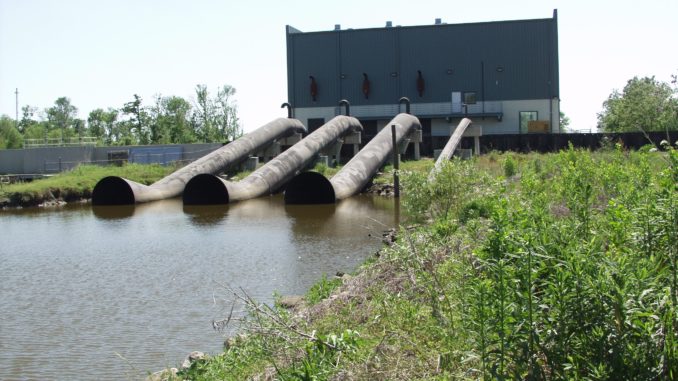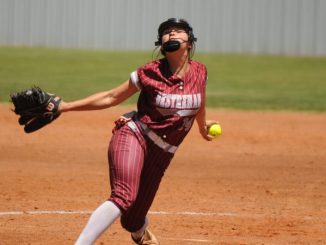
Hurricane protection not complete on east bank
In the never ending battle the parish faces against the forces of Mother Nature, the Pontchartrain Levee District is projecting a need to add to 3 pumps to the hurricane levee along the shores of the lake. The need for the pumps is being identified through the St. Charles Urban Flood Control Feasibility Study; a $5.4 million study being conducted with the levee district and the Army Corps of Engineers to finalize the requirements for the additional pumps along the east bank hurricane levee.
“When the levee was originally designed by the Corps, in the event of a tidal surge, the parish had to close the (sluice) gates of the levee because the Corps had stated there was enough retention area on the protected side of the hurricane protection levee to allow for that water to pool, said Commissioner Tony Cunningham, who represents St. Charles Parish for the Pontchartrain Levee District.
According to design, once the tidal surge subsided, then the sluice gates are reopened and the retained water drains into Lake Pontchartrain.
“What we’ve found is that we don’t have enough retention area,” said Cunningham. As for examples, Pontchartrain Levee District President Steve Wilson cited the May 1995 flood.
Even during Hurricane Katrina there were problems on the east bank. “We had a majority of the streets in Ormond that were flooded, and they stayed like for some time. Fortunately, we didn’t get any water in peoples’ homes,” forcing them to turn on the pumps within the subdivision.
“The water got so high on Airline Highway, it covered some of the lanes,” said Cunningham, adding, “This is the situation that faces the parish: We have the ability to pump it out of the neighborhoods. But once we do, we tend to flood Airline Highway.”
Currently, there is already one pump in place at Bayou Trepagnier near the Bonne Carre Spillway; it was a $12 million project funded by Shell/Motiva, St. Charles Parish and the levee district.
Early projections by the levee district call for pumps at Cross Bayou, Walker Drainage Structure and Almeida Drainage Structure.
As for the length of time to complete the construction of the pumps, neither members of the Corps nor the levee district could estimate, as the flood study is only over halfway completed.
Cunningham did say, however, that the levee district was able to cut the time of the study from 5 years down to 30 months, and it might come in ahead of schedule.
However, the needs for the pumps will not be official until the study is complete. As for the timeframe for construction, the Bayou Trepagnier Pump went from design through construction in 12 months.
The funding for the new pumps will be obtained from a variety of sources. The federal government funds 70 percent and the levee district and the parish fund the remaining 30 percent. Of that 30 percent, the St. Charles Parish pays 20 percent and the Pontchartrain Levee District funds 80 percent.
Cunningham believes that the pumps will be funded individually, and he has not ruled out the possibility of local industry helping with the funding.
If the Corps specifications are followed for the stations, they can be funded with outside sources ahead of time, due to the lengthy amount of time it can take for federal funds to be acquired.
The Trepagnier Pump at the spillway is an example, as the levee district recouped the money through the project and applied as credits for future flood control structures.




Be the first to comment